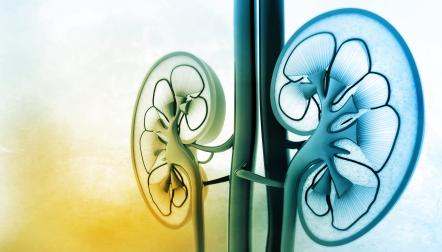
Blog post
Myths about gout — and the facts

Ask anyone who has ever suffered from gout and the first thing they say is how painful it is — and how misunderstood.
Gout is an extremely painful form of inflammatory arthritis that can affect anyone. It is caused when high levels of uric acid in the blood lead to urate crystals forming in the joints. If your body either creates too much uric acid, or cannot clear uric acid in the right way, you may experience gout attacks. Because the kidneys filter and release uric acid from the body, people with kidney disease are more likely to experience a buildup of urate crystals, and therefore, gout.
Gout comes in sudden, and sometimes severe attacks, also called flare-ups. During a gout attack you may have pain, swelling, and/or redness in your joints. Gout flare-ups can be extremely painful and may be hard to control. The condition can disrupt many aspects of daily living, including work and leisure or family activities.
Unfortunately, in many cases gout isn't taken seriously and very often, the patient is blamed for the condition. Here are a few common myths about gout — along with the facts.
Myth: Gout is rare.
Gout is a relatively common condition: More than 8 million Americans have gout and the numbers are growing. Gout is the most common form of arthritis in men over the age of 40.
Myth: Gout is a man's disease.
Men and women can get gout. Though men are overall 10 times more likely to develop gout, rates of gout tend to even out after age 60 since for women, gout tends to develop after menopause.
Myth: Only obese people get gout.
People of all sizes can develop gout. Though obese people are at an increased risk, gout is more common in people who have other health problems like diabetes, high blood pressure, high cholesterol or kidney disease.
Myth: Gout only affects the big toe.
The big toe is the most common place for gout attacks to happen, and many people have their first gout attack in their big toe. But gout can happen in all joints in the body including the hands, elbows, knees, and ankles. When people have chronic gout, often several of their joints are affected.
Myth: Gout eventually goes away on its own.
Symptoms of a gout attack often go away within a few days, but that does not mean that gout is gone. Even if you don't feel symptoms, urate crystals in the body can cause long-term health problems like joint and kidney damage.
Myth: There are things I can eat and avoid in my eating plan to prevent or cure gout.
There may be foods you should avoid if you are prone to gout, and certain foods you eat may help to decrease the level of uric acid in your body. But nutrition alone is not a cure. People with gout who follow a healthy eating plan may still need medicines to prevent gout attacks by lowering the level of uric acid in their body.
If you think you might have gout, talk to your doctor about your symptoms. If you have gout and are experiencing symptoms, talk to your doctor about the available treatments. You may need a referral to a rheumatologist, or arthritis doctor, who specializes in gout.
On National Gout Awareness Day, AKF held a Facebook Live gout chat featuring a patient with chronic gout and a rheumatologist. You can watch the 30-minute video at this link on AKF's Facebook page.






